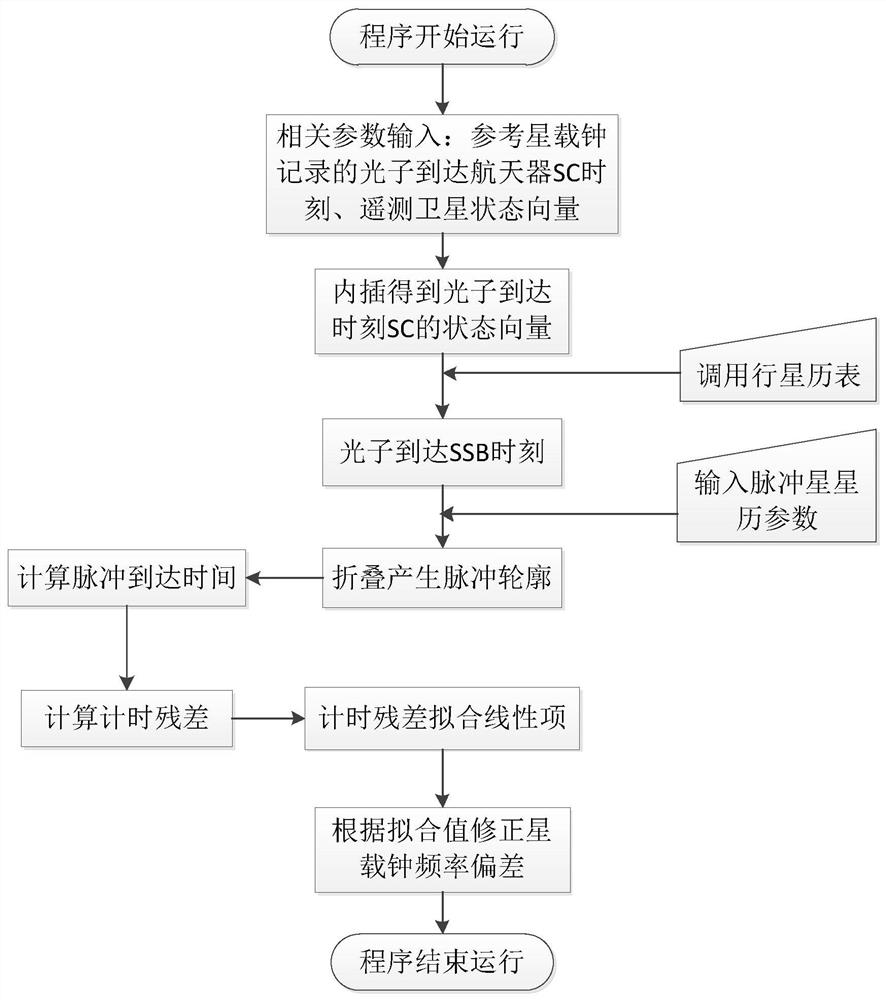A Time Service Method in Deep Space Based on X-ray Pulsar
A pulsar and X-ray technology, which is used in the X-ray pulsar deep space timing application field, can solve the problems of unstable output frequency and affect the time accuracy of spacecraft, and achieves improved accuracy, high performance maintenance, and improvement of frequency deviation. Effect
- Summary
- Abstract
- Description
- Claims
- Application Information
AI Technical Summary
Problems solved by technology
Method used
Image
Examples
Embodiment Construction
[0015] The present invention will be further described below with reference to the accompanying drawings and embodiments, and the present invention includes but is not limited to the following embodiments.
[0016] The X-ray photons emitted by the pulsar can be received by the X-ray detector, and the time when the photons arrive at the detector is recorded by the onboard atomic clock. A stable timescale is stable only when it is described by a stable, relatively immobile station. The gravitational potential of the satellite and the speed of movement of the satellite are constantly changing. According to the "clock slowing" effect of special relativity and the "gravitational redshift" effect of general relativity, the moment when the photon reaches the detector needs to undergo various relativistic corrections and then convert to An imaginary point of reference for the quasi-inertial system, the Solar System Center of Mass (SSB), from which the measured pulses arrive at the SSB...
PUM
 Login to View More
Login to View More Abstract
Description
Claims
Application Information
 Login to View More
Login to View More - R&D
- Intellectual Property
- Life Sciences
- Materials
- Tech Scout
- Unparalleled Data Quality
- Higher Quality Content
- 60% Fewer Hallucinations
Browse by: Latest US Patents, China's latest patents, Technical Efficacy Thesaurus, Application Domain, Technology Topic, Popular Technical Reports.
© 2025 PatSnap. All rights reserved.Legal|Privacy policy|Modern Slavery Act Transparency Statement|Sitemap|About US| Contact US: help@patsnap.com

